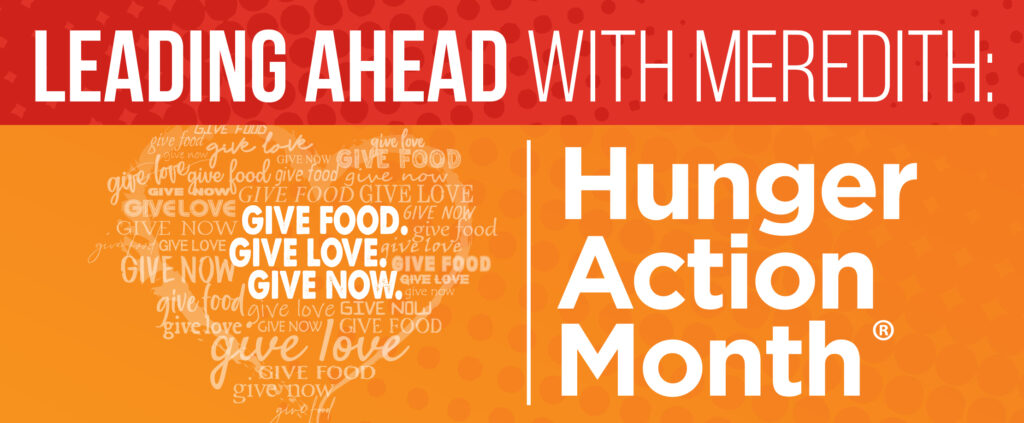“Even as a foodbanker, and someone who deals with hunger issues on a daily basis, I felt like I walked out of the theatre with a better understanding of hunger in America.”
“One of the most touching moments to me was when a fifth grade girl named Rosie commented that she wanted her kids to have a better life than she has. Rosie’s family struggles with food insecurity, and this child is acutely aware of the hardships that her family endures on a daily basis. Having to be so concerned with such significant family issue at the age of 11 is a reality that most people never have to experience.”
– Sara Lewis, agency relations coordinator for the St. Louis Area Foodbank
“A Place at the Table undertakes the overwhelming task of illustrating the wide ranging affects of hunger. It’s about morality, education, nutrition, food deserts, food insecurity, poverty, politics and patriotism.”
“On one end, the documentary demonstrates how hunger can affect one child’s physical and mental health. So, we witness the affects of hunger on a very singular and personal level. Then, the film explores how the problem of hunger weakens our national security. We, therefore, witness how hunger affects every America, even if that American is not experiencing food insecurity. As reported by Ready, Willing and Unable to Serve, three out of four children are unfit for military service, and obesity is a significant contributing factor. The film coherently explains how food insecurity leads to obesity and poor health.”
“So, it makes sense when Jeff Bridges, a strong hunger advocate, says, “’It’s not only a moral issue. It’s a patriotic issue.’
“Ultimately, the film resonated with me because it shows how hunger causes a rippling effect in our country. The film is like watching a storm ravage a boat. For too many families, it is too difficult to steer the ship straight. Leaving the theater, you can’t help but desire a time for slack tide in our county – a time when the waves are still, a time when the boat rests with more ease, a time when mothers and fathers do not stress over providing nutritious food for their children.”
– Patrick Delhougne, development associate at the St. Louis Area Foodbank
“I thought that film did an excellent job at putting a face on hungry. I felt it wasn’t statistics heavy – there was a good mix of researched support, but I liked that it showcased different walks of life that are affected by the ever looming (and growing issue) of hunger. Some individuals that might otherwise be overlooked.”
“A few issues discussed that I thought were integral to portraying a full picture of what food insecurity entails – incomes remaining stagnant while the price of living and food continuing to rise, limited food choices – whether it be a food desert situation or lack of funds to purchase healthy food and instead having to resort to processed food (more bang for buck), and the negative effects on one’s health. Overall, I think that it appeals to someone that might be aware of the current issue this country is facing, but also can speak to those that might be more in the dark in regards to the severity of the issue of poverty and hunger.”
– Andrea Hale, SNAP Outreach Coordinator at the St. Louis Area Foodbank
“This weekend I had the opportunity to watch the often wrenching and surprisingly jaw dropping documentary “A Place at the Table”. The film chronicles the surprisingly intertwined issues of hunger and obesity in the United States.Facts and figures tied to tales of urban and rural poverty serve to illustrate the shocking real-world impact of policy decisions that have impacted America’s poor for over 30 years.”
“Drawing a striking contrast between the countries attitudes toward poverty in the late 60’s and 70’s, which nearly eradicated hunger, and the indifference toward the poor since the 1980s and the subsequent decline in government benefits, “A Place at the Table” is an indictment of government priorities which will hopefully force policy makers to look at the impact of their decisions on the huddled masses and think about their role in directly impacting the lives of American citizens and the course this country takes.”
– PJ Tamayo, illustrator and writer at PGAV Destinations in St. Louis
“What I liked most about “A Place at the Table” is that it illustrated why obesity and hunger go hand and hand. I have heard people ask “If hunger is a problem then why are poor people fat?”.
“A Place at the Table” explained in great detail why this is happening and how we can fix it. Debunking the myth that being obese and poor, is due to people making bad food choices when in reality it has much more to do with affordability and availability.”
– Allison Jones, Web and Design Coordinator at the St. Louis Area Foodbank



